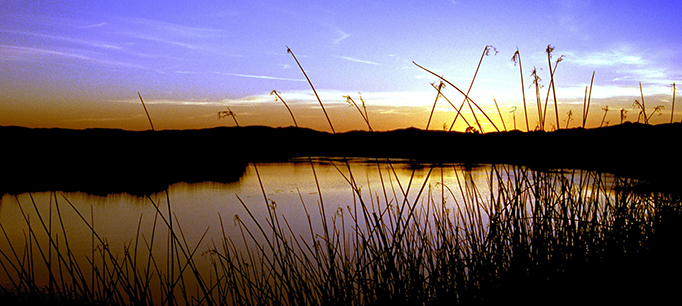The federal government’s Clean Water Act includes dozens of regulations to reduce water pollution. But it doesn’t include a clear definition of what types of water systems it covers. The Trump administration recently ordered federal agencies to begin the formal process to repeal an Obama-era rule—called the Waters of the United States rule. We asked Richard Frank, an expert in California environmental law and a member of the PPIC Water Policy Center research network, what President Trump’s executive order could mean for wetlands in California and beyond.

PPIC: What was the purpose of the Waters of the United States rule?
Richard Frank: It was intended to fix ambiguity in the Clean Water Act relating to federal jurisdiction over wetlands and water pollution control. In recent years it was left up to the courts to figure out if a specific waterway was covered. There’s wide agreement that this kind of case-by-case litigation is an uneconomic and inefficient way to address the problem—going all the way to the US Supreme Court.
PPIC: What aspects of the rule are controversial?
RF: From the time the Clean Water Act was enacted in 1972, the issue of what is a wetland has been far and away its most controversial aspect. For many years the agricultural community, developers, and business interests have complained that the Environmental Protection Agency (EPA) and the US Army Corps of Engineers, which jointly administer the wetlands provisions of the Clean Water Act, have been excessive in their assertion of jurisdiction over wetlands. It’s a Goldilocks situation: farmers and developers thought the agencies were too bold. Environmental interests complained they weren’t robust enough in interpreting what a wetlands is. The statute doesn’t provide a lot of help—it’s based on a terribly imprecise definition.
PPIC: What will happen next?
RF: The president directed EPA and the Corps to withdraw the Waters of the United States rule, which had not yet gone into effect. The tougher question is will it be repealed or replaced, presumably by a narrower definition of wetlands? In the meantime, there will be no regulatory guidance at all for at least a year or two. From a public policy perspective this is the worst possible outcome—we’re left with an ad hoc process that is time consuming, expensive, and unpredictable in its outcome.
PPIC: How does this affect California?
RF: The rule would have provided greater protection for California wetlands. Some might argue that the cow’s already out of barn, since the state has already lost 90% of its historic wetlands and 95% of its coastal wetlands. For the next couple of years, at least, that additional protection for our remaining wetlands is removed, unless the state steps up in some way.
In the meantime, I’m confident that the wetlands protection provisions of the federal Clean Water Act will remain the most controversial and heavily litigated provision of this bedrock environmental law for the foreseeable future.
The good news is that the state already has broader authority than do federal regulators. California actually has the power to regulate wetlands more broadly than the federal government. But despite having a strong clean water law of its own, California currently lacks a comprehensive state system of wetlands regulations that could fill the current regulatory gap left by the president’s repeal of this rule. I hope and expect that the State and Regional Water Boards will fill this regulatory vacuum in the near future.
The Clean Water Act’s wetlands protection program has had another important effect over the past 45 years: it has raised public awareness about the many positive societal values wetlands have, from providing increased flood protection and cleaner water to providing essential wildlife habitat.
Read “A State of Water Independence” (PPIC Blog, January 4, 2017)
Visit the PPIC Water Policy Center’s ecosystems resource page


